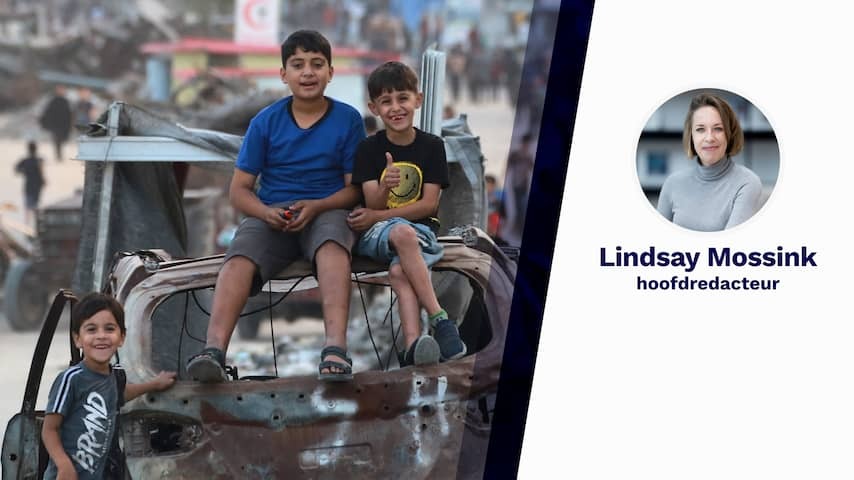
Consciously show a shocking photo. Go further than just the dry facts. These are choices we make in our reporting about the tensions in the Middle East. Editor -in -chief Lindsay Mossink tells you more about it again.
An email from a nu.nl visitor:
It is a reaction to the story of NU.nl journalist Martijn van Delft. Martijn works on our news editors and spoke with James Elder, international spokesperson for UNICEF. Elder has been in Gaza five times since the war broke out there. In Gaza, death is everywhere, Elder describes. Especially read it yourself:
And indeed, the piece starts with a warning. The details and images are shocking. We also received responses, including these:
The story of Martijn is a slap in the face, as editorial chief Kim Einder describes that aptly describes.
Testimonies tell the story behind the facts. It gives context, which in this case shows that there is much more going on than an ‘equal’ war.
And such a shocking photo shows what we are actually talking about. One photo of a deceased child can penetrate more than dozens of news items in which we repeatedly report fatalities (including children). This is how real awareness arises.
Actually well substantiated
At the editors we notice that our factuality can sometimes get in our way. While the situation in Gaza deteriorates by the day, we also focused our eyes on the escalation between Israel and Iran.
Shortly after the attack, experts that we spoke to concluded that Israel violated international law. The same experts conclude that the US did that with last night’s attacks.
We wrote down the following: the fact that Iran Israel may ever attack with nuclear weapons, Israel did not yet give the right to attack in advance. That is only the time that an Iranian attack is really imposed.
In fact, of course well substantiated. But if you look at how Israel experiences the situation, such an attack can feel like a logical step. Those are exactly the stories that we also have to make.
Deliberately Showing a Shocking Photo. Going Beyond Just the Dry Facts. These are choices we make in our reporting on the tensions in the middle east. Editor-in-chief lindsay mossink tells you more about it.
An email from a nu.nl Visitor:
It is a response to the story of nu.nl journalist Martijn van Delft. Martijn Works at Our Newsroom and Spoke with James Elder, International Spokesperson for Unicef. Elder Has Been to Gaza Five Times Since the War Broke Out There. In Gaza, Death is Everywhere, Elder Describes. Be sure to read it yourself:
And Indeed, The Piece Begins with a Warning. The details and images are shocking. We also recedived response to this, including this one:
Martijn’s Story is a limp in the face, as editor-in-chief kim einder aptly describes it.
Testimonies Tell the Story Behind the Facts. It gives context, which in this case shows that there is much more going on than an ‘equal’ war.
And such a shocking photo shows what we are actual talking about. One photo of a deceased child can penetrate you more than boxes of news reports in which we repeatedly report fatalities (including children). That is how real awareness arises.
Factually well-founded
In The Newsroom, We Notice That Our Factuality Can Sometimes Get In Our Way. While the Situation in Gaza is Deteriorating Day by Day, we are also focusing on the escalation between Israel and Iran.
Shortly after the attack, experts we spoke to concluded that Israel had violated international law. Those same experts conclude that the US also Did So with the Attacks Last Night.
We wrote the following: the fact that Iran May One Day Attack Israel with Nuclear Weapons Did not give Israel the Right to Attack in Advance. That is only allowed when an iranian attack is really immant.
Factually, or course, well-founded. But if you look at How Israel Experiences the Situation, Such An Attack Can Feel Like A Logical Step. These are precisely the stories that we also need to make.